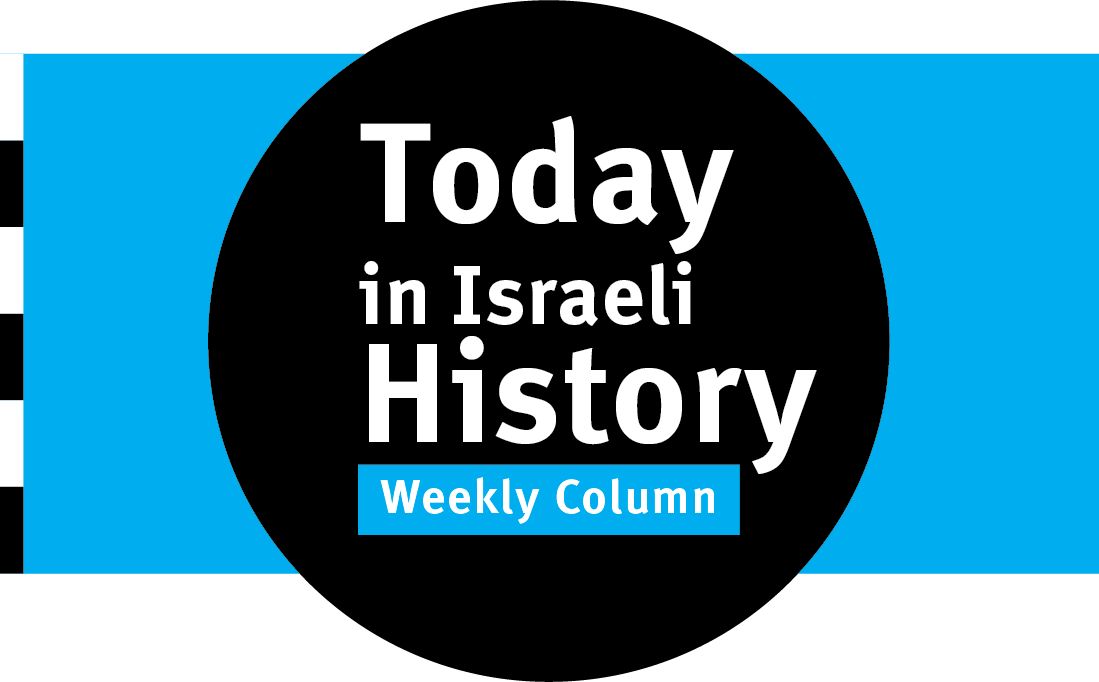Aug. 30, 1944 — MacMichael Ends Term in Palestine

Rattled by numerous attempts on his life and fearing for his family, Harold MacMichael resigns as Britain’s fifth high commissioner to Palestine after more than six years, a period of increasing restrictions on Jewish immigration. His refusal to allow entry to the 800 refugees aboard the Struma, which then sank in the Black Sea, and his focus on the economic needs of Arabs were among actions that angered the Jewish population.
Aug. 31, 1947 — U.N. Palestine Panel Holds Last Meeting

Members of the U.N. Special Committee on Palestine visiting the region in June 1947 include Enrique Fabregat of Uruguay and Chairman Emil Sandstroem of Sweden. By Hans Pinn, National Photo Collection of Israel, CC BY-SA 3.0.
The U.N. Special Committee on Palestine, formed four months earlier to investigate violence and recommend the next political steps for the British-administered region, meets for the final time. Its majority report, endorsed by eight of the 11 nations on the panel, calls for Palestine’s partition into two states with an economic union. The minority report, backed by Iran, India and Yugoslavia, calls for a federation of Jewish and Arab states.
Sept. 1, 1891 — Artist Yosef Zaritsky Is Born

Painter Yosef Zaritsky is born near Kyiv in Ukraine. He moves to Jerusalem in 1923, then to Tel Aviv, and is one of the founders of the Ofakim Hadashim (New Horizons) movement, which emphasizes universality and the abstract. His painting “Oztma” (“Might”) hangs at the entrance to an exhibition for Israel’s 10th anniversary in 1958 until Prime Minister David Ben-Gurion expresses his dislike for the work.
Sept. 2, 1953 — Israel Begins Jordan River Project

Israel starts work on a project to divert some Jordan River water at the B’not Yaakov (Daughters of Jacob) Bridge in the north to irrigate the Negev and in the process generate electricity. The project is halted within weeks, however, after Syria claims that the work violates its 1949 armistice agreement with Israel. Years of negotiations follow before Israel decides to take water from the Kinneret (Sea of Galilee) instead.
Sept. 3, 2011 — March of the Million Seeks Social Change

More than 450,000 Israelis take to the streets in the then-largest demonstration in Israel’s history, billed as the March of the Million. It is part of a summer of social justice demonstrations focused on affordable housing and relief from the high cost of living. Under the slogan “The government only understands the numbers,” march leaders demand policy changes from Prime Minister Benjamin Netanyahu.
Sept. 4, 1985 — New Shekel Is Introduced

Israel rolls out the new Israeli shekel as the official state currency. The original Israeli shekel was launched in 1980 to replace the Israeli pound with a currency using a biblical Hebrew name. Because of hyperinflation in the first half of the 1980s, the Knesset passed the 1985 Israel Economic Stabilization Plan, which included the introduction of the new shekel, worth 1,000 of the old shekels. Confusion ensues.
Sept. 5, 1978 — Camp David Summit Begins

President Jimmy Carter convenes negotiating teams led by Egyptian President Anwar Sadat and Israeli Prime Minister Menachem Begin at Camp David in Maryland. The negotiations over 13 days produce the accords that serve as the basis for the peace treaty signed in March 1979. The Camp David document combines a framework for negotiating the peace treaty with an outline for developing Palestinian self-governance.
Items are provided by the Center for Israel Education (israeled.org), where you can find more details.


